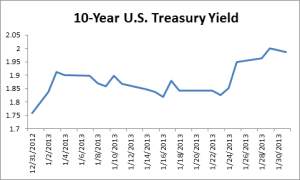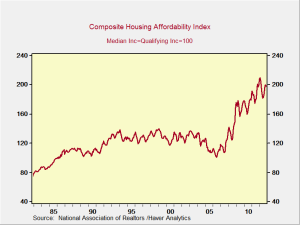After spending the weekend digging out from the latest “storm of the century,” it feels good to get back to my desk and away from my shovel and snowblower. Hope everyone here in the Northeast made it through with as little pain as possible.
According to my wife, who presumably got it from a reliable source, it was the fifth worst winter storm on record. But then, we’ve had multiple record-setting “hundred-year storms” over the past couple of years, which suggests either that something has changed or that our standards for hundred-year storms are out of whack. Maybe we’ve all been the unknowing beneficiaries of a spell of peaceful weather that’s now ending.







